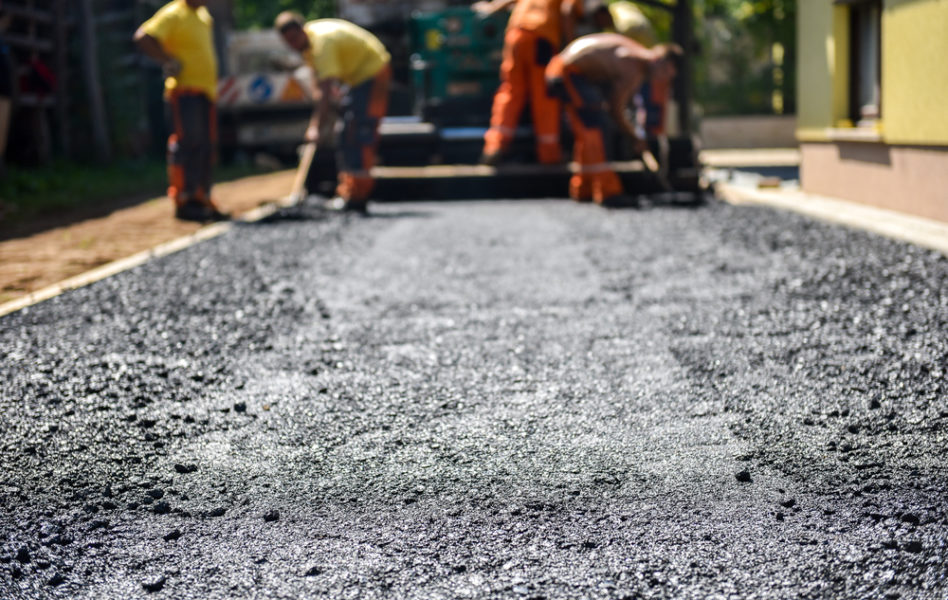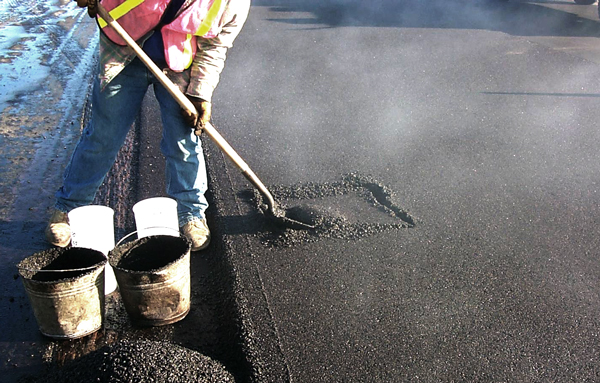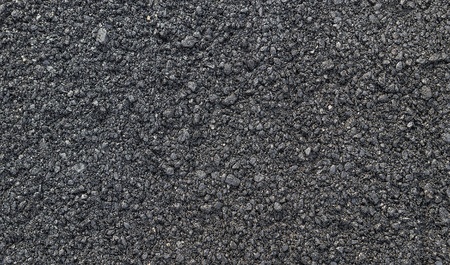Experience the Distinction: Hot Mix Asphalt Paving for Regrading Projects
Experience the Distinction: Hot Mix Asphalt Paving for Regrading Projects
Blog Article
Opening the Secrets of Hot Mix Asphalt Technology
Discovering the depths of warm mix asphalt technology uncovers a world where specific solutions and meticulous processes merge to form our roadways and infrastructure. The blend of binders, aggregates, and fillers isn't merely a building and construction job yet a strategic orchestration of resilience and effectiveness. As we peer right into the detailed dancing of elements, a tapestry of durability and sustainability unravels. What lies under this surface area of asphaltic proficiency, and what secrets wait to be revealed in the world of paving technologies?
Importance of Hot Mix Asphalt
Warm Mix Asphalt plays an important duty in modern-day framework development due to its resilience and cost-effectiveness. As the most typically used paving material for roadways, highways, and parking great deals, Hot Mix Asphalt uses an array of advantages that contribute to its relevance in construction projects.
The durability of Warm Mix Asphalt comes from its composition, which consists of accumulations, binder, and filler products that are carefully picked and blended to satisfy specific efficiency needs. This accurate combination leads to a solid and versatile pavement that can endure regular usage without considerable wear and tear. In Addition, Hot Mix Asphalt is 100% recyclable, additional boosting its sustainability and environmental benefits. On the whole, the relevance of Warm Mix Asphalt in facilities growth can not be understated, as it proceeds to be a keystone of modern building techniques.
Parts of Asphalt Mixes
The composition of asphalt blends is composed of carefully chosen accumulations, binder, and filler materials that are important for accomplishing specific performance requirements. Accumulations are the main part of asphalt blends, providing strength and security. These accumulations can be all-natural, such as gravel or smashed rock, or synthetic, like recycled materials from old pavements. The binder, commonly asphalt or asphalt concrete, holds the accumulations together and supplies flexibility and longevity to the mix. The choice of the binder is crucial as it straight affects the mix's performance in different climate condition. Fillers, such as hydrated lime or Rose city cement, are made use of to enhance the mix's workability and aging resistance. Angled Parking.
The combination and proportion of these elements play a considerable role in identifying the quality and efficiency of the asphalt mix. Designers carefully develop the mix to fulfill particular demands, thinking about elements like traffic quantity, climate conditions, and pavement life expectancy. Correct choice and balancing of accumulations, binder, and fillers are necessary for developing long lasting, long-lasting asphalt pavements.
Combining and Manufacturing Strategies

Once the accumulations are selected, the binder, frequently asphalt cement, is included in bind the materials with each other. The binder's high quality and quantity considerably impact the mix's flexibility, resistance, and stamina to ecological aspects. Additionally, fillers like hydrated lime or Rose city cement might be included to boost specific attributes of the asphalt mix, such as its workability or wetness resistance.
Throughout production, the aggregates and binder are heated, normally between 250-325 ° F(121-163 ° C ), to facilitate blending and guarantee appropriate layer of the accumulations. The blending process needs to be thorough to accomplish an uniform mix that advertises the wanted efficiency attributes of the asphalt. Various techniques, such as set blending or drum blending, try these out are employed to attain constant and top notch asphalt mixes for building and construction projects.
Aspects Influencing Asphalt Efficiency
Variables affecting asphalt performance encompass an array of variables that impact the longevity, durability, and general quality of asphalt sidewalks. One key aspect is the quality of products utilized in the asphalt mix. The type and resource of aggregates, the binder high quality, and the ingredients all play a considerable function in establishing the efficiency of the asphalt sidewalk. The rank of accumulations is crucial as it impacts the mix's workability, resistance, and security to fracturing and rutting.

Ecological conditions also affect asphalt performance. Temperature variations, wetness seepage, and go to my site web traffic lots can all impact the structural integrity of the sidewalk. Style considerations, such as sidewalk thickness and drainage, are vital in making certain the lasting performance of the asphalt sidewalk. By carefully thinking about these elements, specialists and engineers can maximize asphalt performance and boost the life span of pavements.
Lasting Practices in Asphalt Modern Technology

In addition, the growth of warm-mix asphalt (WMA) technologies has acquired traction recently. WMA permits the production and positioning of asphalt mixes at reduced temperature levels compared to traditional hot-mix asphalt, leading to lowered power consumption and greenhouse gas discharges. The usage of porous asphalt blends can help reduce stormwater drainage concerns by permitting water to penetrate via the pavement and into the ground, advertising all-natural water purification and reenergize processes. By executing these sustainable techniques, the asphalt industry can add to constructing a more resilient and eco friendly facilities network.
Final Thought
To conclude, hot mix asphalt technology plays a critical role in modern framework growth due to its longevity and cost-effectiveness. By very carefully stabilizing components, employing proper blending strategies, and thinking about numerous aspects, designers can produce high-grade asphalt mixes that endure heavy traffic lots and severe weather. Embracing sustainable techniques, such as utilizing recycled products and warm-mix innovations, additionally boosts the click here for more environmental kindness of asphalt innovation.
Blending and manufacturing techniques in hot mix asphalt technology involve the exact combination and handling of accumulations, binder, and fillers to develop a durable and high-performance asphalt mix.Aspects influencing asphalt efficiency incorporate a variety of variables that influence the longevity, longevity, and overall top quality of asphalt sidewalks. Lasting practices in asphalt modern technology include various campaigns intended at decreasing the environmental effect of asphalt production and paving procedures. By including reclaimed asphalt pavement (RAP) and recycled asphalt roof shingles (RAS) right into brand-new asphalt mixes, the industry can dramatically decrease the usage of raw products and energy, while additionally lowering land fill waste.
WMA enables for the manufacturing and placement of asphalt mixes at reduced temperature levels contrasted to conventional hot-mix asphalt, resulting in reduced energy consumption and greenhouse gas emissions.
Report this page